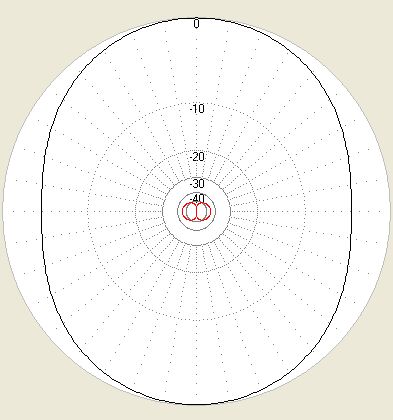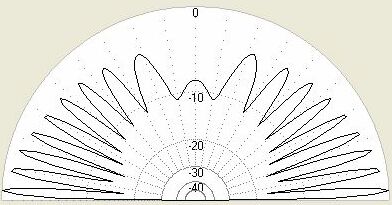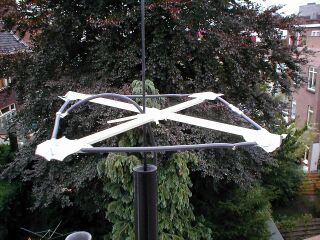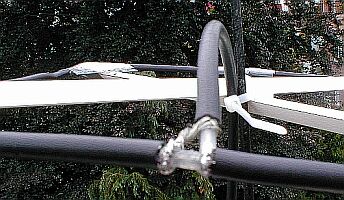In order to "compute" the dimension, Karl Rothammel mentioned that the total length of the dipole shall be 95% of the free-space wavelength. The short-circuit bridges (closing the folded dipole) are to be placed at a distance-fraction being equal to the velocity factor of the coax cable used, which will be 66% using RG-58 or RG174.
Some Simulations....
No sofisticated simulations have been done on this aerial... Just to give a short impression what can be expected, a very rough simulation using "real" ground setting with an antenna height of 9.5m (corresponds to a height gained by a DK9SQ "fibreglass telescope tower").
the horizontal directional diagramm

and for completeness, the vertical diagram too


